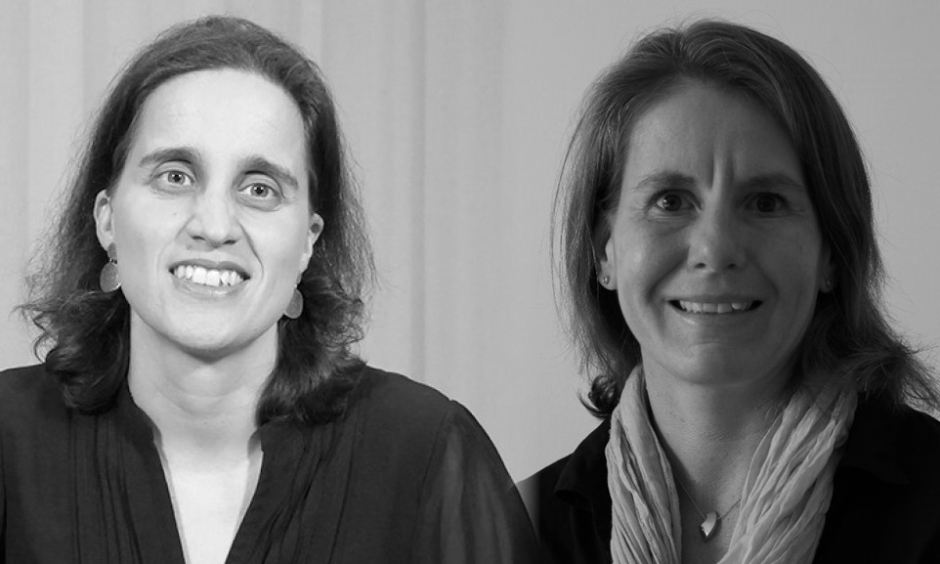The world of rheumatology is evolving quickly, and the EULAR congress evidences the progress being made every year across the globe. We met with two members of the EMJ Rheumatology editorial board to discuss the future of rheumatology as well as their experiences, research, and professional goals.
Dr Lucía Silva-Fernándezen | Complexo Hospitalario Universitario de A Coruña (CHUAC), A Coruña, Spain
![]()
How does EULAR compare to other congresses that you have attended?
EULAR is much bigger than other congresses and meetings I usually attend, which are mostly at a national level. The science on offer is very broad, to a point that sometimes it can be impossible to see all the things you are interested in. The EULAR congress is also a great opportunity for working group meetings and generally a good chance to meet international peers working in the same field and establish new collaborations.
You were recently involved in research regarding ‘Recommendations of the Spanish Rheumatology Society for Primary Antiphospholipid Syndrome.’ What are the key take-home messages from part I and II of this research?
This was an initiative of the Spanish Society for Rheumatology to develop a set of recommendations on antiphospholipid syndrome in collaboration with other professionals involved in the care of these patients, such as haematologists and gynaecologists. The result is a document including 46 recommendations, which cover five main areas: diagnosis and evaluation, primary thromboprophylaxis, treatment of primary antiphospholipid syndrome or secondary thromboprophylaxis, treatment of obstetric antiphospholipid syndrome, and special situations. The document also includes information on the role of new anticoagulants, the recurrence of the disease, and the main risk factors for it.
How do you think we can work towards inspiring and encouraging more young women to consider a career in medicine?
Currently there are a lot of young women starting their career in medicine. In fact, in some medical schools in my country, the percentage of women among students reaches 80%. So, in principle the future of women in this field looks guaranteed. However, I see a much bigger and worrying difference in experienced professionals. Unfortunately, in most expert panels, committees, and working groups, the percentage of women is really low. Also, if we had access to a list showing the leaders of major projects in rheumatology, we would find that women are underrepresented. Luckily, this situation is slowly changing, and in 2 years’ time we will have the second female president in the EULAR’s 70-year history. I think the only way of changing this situation is that the leaders and organisers of the different projects actively try to respect equality when designating the members of the committees.
You chaired a poster session on Health Services Research. Could you share what the aims of the session were and were there any posters that stood out to you?
The session aimed to present different interventions in health services that could improve patient care. I considered all of them very interesting and useful, but I especially remember a poster from the UK on some measures to improve inpatient referrals and another from the USA on the impact of day of admission on mortality in septic arthritis. It was really interesting to see how circumstances other than the treatment or direct care of patients can have so deep an impact on their prognosis.
What advice do you have for young rheumatologists attending EULAR for the first time?
Attending EULAR for the first time can be overwhelming due to the large number of scientific sessions and other activities that are offered. The key to making the most of the congress is to carefully plan in advance what sessions and activities you want to attend. For this purpose, it can be very useful to download the EULAR Congress mobile App where you can plan your itinerary. Apart from the scientific content, I would also advise new attendants to set aside some time to explore other exhibition areas and take breaks. Once there, it is very enriching to start conversations with different people and engage in informal networking. In this sense, the poster viewing is a great opportunity to establish new contacts with colleagues with similar interests to yourself. Specifically aimed at young people, the Emerging EULAR Network (EMEUNET) has developed the Ambassador Programme, which consists of receiving congress mentorship from EULAR veterans in the same field of interest. For this initiative, they allocate 4–5 new attendants to an ambassador who contacts them before the meeting and guides them on how to choose among the different activities at the congress to make the most of their time. This programme has been running for a number of years and both the ambassadors and the first-time attendees are very satisfied with it.
Dr Suzanne Verstappenen | Reader in Musculoskeletal Epidemiology, Centre for Epidemiology VERSUS Arthritis, Centre for Musculoskeletal Research, School of Biological Science, University of Manchester, Manchester, UK
![]()
Please can you tell us a little about your current research interests?
My main research interest is in rheumatoid arthritis and juvenile idiopathic arthritis. I focus on short-term and long-term outcomes and one of my main interests is in how these conditions affect work (absenteeism and presenteeism). I am the principal investigator of a large international study looking at presenteeism in Europe and Canada. I’m also the chair of the Outcome Measures in Rheumatology Worker Productivity Group: in this group, we recommend outcomes to be used in clinical trials and observational studies. Furthermore, I am a co-investigator of the VERSUS Arthritis/MRC Centre for Musculoskeletal Health and Work. Other areas of research include methotrexate. I am the chief investigator of a large methotrexate cohort from the UK including patients with rheumatoid arthritis who start methotrexate for the first time; we have about 2,400 patients included in that study with very detailed information on disease activity and patient reported outcomes, including work and adherence. We have also collected blood samples, genetic information, and more; it is a huge and very rich cohort.
Talking of your work on absenteeism, you recently co-authored a paper entitled ‘A Systematic Review of Productivity in Economic Evaluations of Workplace Interventions: A Need for Reporting Criteria?’ What would you say are the main take-home messages from this study?
I think work is an important outcome and I am therefore very pleased with the new EULAR campaign ‘Time2Work’. We started to look more at absenteeism and presenteeism and there are a number of ways to measure presenteeism. However, these are not really developed to do economic evaluations, so if you want to do an intervention in the workplace, how can you then measure the loss of productivity? Our review shows that there is actually no real economic theory underpinning some of these measures and how the costs are calculated. So, there needs to be more consistency. If we really want to say this intervention is working (i.e., is cost beneficial or cost-effective) then we must create new measures, because it is currently very difficult to compare different interventions from an economic perspective.
Patient-centricity is a hot topic in the field of rheumatology. How important is this consideration and what problems does it pose for rheumatologists?
There a number of factors here playing a role and it has such a huge impact on many other things, including work, for example, and ideally some of these things should be taken into account. But we also know that there is always limited time for a rheumatologist and the general practitioner, for example, to discuss every single thing that may impact the patient. Perhaps it should be other people, like nurses and other health professionals, that discuss some of these topics. These topics might vary per patient, based on what they find important. So, for one person a key consideration could be work, for another it might be for example their family life. However, I think that in general more people are more open to have that discussion in the clinic.
What are some of your goals as the Director of Social Responsibility for the School of Biological Sciences at the University of Manchester?
The role includes a lot of things, including patient and public involvement and engagement. We do a lot of engagement events to inform the community in Greater Manchester about our research. Together with colleagues within the Centre for Musculoskeletal Diseases, we had a photography exhibition called ‘The Future in Your Hands’ celebrating people living with musculoskeletal conditions in Greater Manchester and highlighting how these people have taken control of their lives to live them the fullest.
Another aspect of social responsibility is what we call widening participation. We go out to schools in deprived areas and talk about research and about going to university; often these children do not even consider going to university. We have some really nice initiatives where we take a group of pupils from a deprived school to a field work centre in the Yorkshire Dales for a weekend. Most of these children have never been outdoors like this. During the weekend, we have several activities to talk about careers and about university life and what you can do with a university degree. During the weekend they will also do a number of field-work activities. These events not only inspire the students but are also an annual highlight for me.
On the topic of diverse backgrounds, what impact do factors like ethnicity and socioeconomic backgrounds play in your research?
Ensuring diversity within a study cohort can be challenging. For example, in the previously mentioned methotrexate cohort, we would expect that most participants are Caucasian. We used the UK Biobank, a large national study, wherein most participants classify themselves as White British. So, sometimes it can be very hard to recruit people from different backgrounds and ethnicities. There may be various reasons for this disparity; there may be a language barrier, for example, or other factors making it more difficult or less appealing for them to participate, or even that we simply do not record the data, such as in the case of socio-economic background in most studies. eHealth offers some solutions to this problem, but it also presents its own challenges: with eHealth you do not get the same level of detail as you get with a traditional observational study.
I am hopeful that attitudes towards study participation may change with future generations, so that research is generalisable to the whole population of interest.
What do you think will be the hot topics in rheumatology in the next few years?
From my perspective as an epidemiologist, there is still a need to gain a better understanding about the long-term outcomes (economic, quality of life, mobility, and others), especially with an ageing population and the fact that the burden of musculoskeletal diseases is increasing. Patients often have various conditions, and how these diseases interact to affect long-term outcomes is going to be very important. So, I think the focus for rheumatologists in the coming years should be a bit broader than just the disease itself, but on all the surrounding issues that are of paramount importance to patients.








